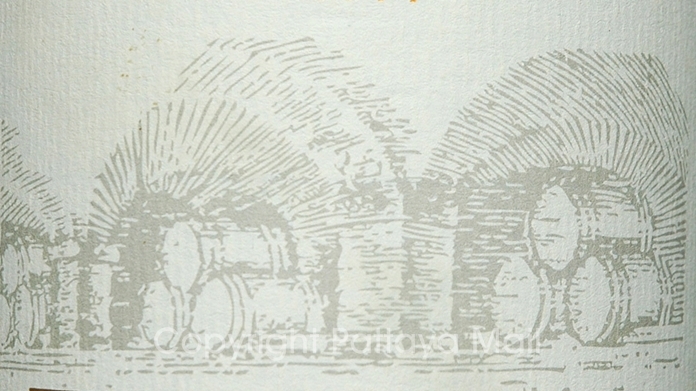
I wonder whether you’ve noticed that the amount of alcohol in wine has been creeping upwards over the last twenty years. At one time, table wines usually contained between 10% to 12% alcohol. But look in your local shop and I bet you’ll find precious few wines under 12%. This tiny amount of a couple of degrees can make a huge difference to the taste as well as the after-effects.
It’s easy to find how much alcohol is in your wine, because it’s printed on the label, although sometimes in such minuscule print that you might have a hard time finding it. But it’s there alright, shown as a percentage, sometimes abbreviated to ABV, which stands for “alcohol by volume”.
Alcohol is an entirely natural substance. It occurs even in ordinary fruit juice although at less than 0.1 percent. Long before Moses was a boy, people discovered that if they left grape juice in a container for long enough, at some point it would turn into something that was worth bringing out at a party. What they didn’t know at the time was that the wild yeasts that existed naturally on the skins of the grapes got to work on the sugars in the grape juice, turning them into alcohol. The wine was probably rough old stuff by today’s standards, but it probably got the party swinging.
Alcohol levels are related to the amount of sugar in the grapes at harvest time. As the grapes ripen, they accumulate sugar. The riper the grapes, the more sugar they contain. And more sugar converts into more alcohol.
New World wines tend to come from warmer climates than the traditional wine-growing areas of Europe. So a Riesling from California will usually have more alcohol than a traditional one from the chilly northern vineyards of Germany.
The argument for high-alcohol wines is that alcohol delivers flavor, just as fat does in food. There is fierce competition in the wine industry and an increasing trend to make wines with more intense flavors.
Some writers have blamed this trend on Robert Parker, considered to be the most influential wine critic in the world. He’s the person who developed the 100-point system for evaluating wines. Because he tends to reward full-bodied, high alcohol wines with high scores, many companies have responded by making wines of this type.
High alcohol can distort the essential character of the wine, making it feel unbalanced. Several well-known restaurateurs in the USA now refuse to sell wine over 14% ABV for precisely this reason.
But change is in the air. For some years, reduced alcohol wine has been promoted by the British Government. Under European Union law, wine must have an alcohol content of at least 8.5% ABV otherwise it can’t be described or labelled as wine.
A couple of Australian companies have introduced some low alcohol brands with about 5.5% ABV. Australian wine-maker Neil McGuigan claims that his company could make “fantastic wines” at around 10% ABV. Whether any of these new wines reach these shores, remains to be seen. Don’t hold your breath.
Los Tilos Chardonnay (white) Chile
This wine comes from the Chilean firm of Sur Andino, established in the 1990s and located South-West of Santiago. Many of their wines are sold under the well-known brand name, Terra Andina. You’ll probably get a whiff of this gorgeous aroma as soon as you pour the wine. It’s got that typical Chilean Chardonnay creamy aroma of pineapple, nectarines (a kind of peach) and a faint hint of dill. You might also smell mango and citrus.
This medium-bodied wine has a beautifully smooth mouth-feel even though it’s quite dry. With plenty of rich and ripe tropical fruit and dry herbs on the palate, there’s also an impressively long dry finish which lasts about forty seconds. And yes, I timed it.
This is a really well-made, well-balanced wine that would be perfect on its own. Despite the low 12.5% alcohol content, the wine is well-rounded and quite rich in flavour. Surprisingly, there’s very little acidity on the palate – hardly any, in fact. If you’re looking for a satisfying, creamy Chardonnay that won’t make you feel heady, you may well enjoy this pleasant wine.
Los Tilos Cabernet Sauvignon (red) Chile
This very dark purplish-red wine has a lovely vibrant aroma of cherry, plum and blackberry. I thought I could pick up a delicate reminder of mint in the background too. Further sniffs revealed a faint tang of white pepper and possibly paprika, though I wouldn’t lay money on the paprika.
The wine is a soft, delicate, medium-bodied wine with an attractively velvety mouth-feel and although it’s on the dry side, it doesn’t come anywhere near the toe-curling class. You’ll taste plenty of rich, ripe berry fruits, no discernable acidity and hardly any tannin. You might also notice hints of vanilla and tobacco. There’s also that pleasant “blossoming” sensation in the mouth and an attractive long fruity finish.
At just 12.5% alcohol, it’s pleasant enough as an easy glugger. The lack of tannin, which is sometimes considered undesirable, has one advantage in that this wine would go well with many Indian and Thai dishes. For various complicated chemical reasons beyond my understanding, tannic wines and curries simply don’t work together.
The wine would make a good partner for red meat dishes, although it could be over-powered by strong-tasting and assertive foods. If you like your reds fruity, easy-going and lower in alcohol than usual, give this one a try. Oh, and in case you’d forgotten, or possibly never knew, Los Tilos means “The Limes”.
 |
 |
 |





